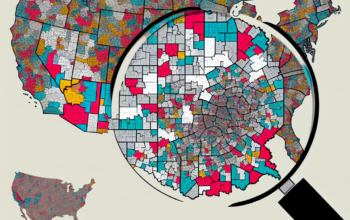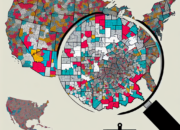Exploring Transportation and Connectivity in Northern Ireland: 2025 Trends and Developments
As we step into 2025, Northern Ireland stands at a pivotal crossroads of economic growth, cultural advancements, and infrastructural development. From its breathtaking landscapes to its rich historical heritage, the beauty of Northern Ireland is matched only by its evolving transportation systems that are enhancing connectivity for residents and tourists alike. This article discusses the recent trends in transportation and connectivity in Northern Ireland, analyzing their impact on the local economy, environment, and social fabric.
Transforming Public Transport in Northern Ireland
Northern Ireland’s public transport system has undergone significant changes since the early 2020s, focusing on sustainability and efficiency. The introduction of electric buses in cities like Belfast and Derry has not only reduced carbon emissions but also enhanced the reliability of public transport. The new fleet is designed to accommodate growing passenger numbers and meet the demanding schedules of urban commuters. The Department for Infrastructure in Northern Ireland has committed to expanding the electric bus network, anticipating an increase in usage as public awareness about climate change continues to rise.
Moreover, efforts to streamline ticketing across various transport modes are underway in 2025. Initiatives like new mobile applications and contactless payment systems are making it easier for users to navigate public transportation. Passengers can now benefit from a unified ticketing system that integrates buses, trains, and even ferries, promoting the use of public transport while reducing the reliance on personal vehicles. This innovation not only enhances user convenience but also aids in tracking usage patterns, which can further inform future improvements in the service.
Expanding Road Infrastructure and Connectivity
With tourism being one of Northern Ireland’s burgeoning industries, the demand for better road infrastructure is paramount. In 2025, road upgrades and expansions are underway to connect tourist hotspots such as the Giant’s Causeway, the Mourne Mountains, and the Causeway Coastal Route more effectively. These improvements are expected to facilitate smoother traffic flow, reduce travel times, and enhance safety for motorists and cyclists alike. Investment in these projects demonstrates Northern Ireland’s commitment to supporting local economies by making these sites more accessible.
Furthermore, as the Northern Ireland government focuses on reducing congestion in urban areas, smart traffic management systems are being deployed in key cities. These systems utilize real-time data to optimize traffic light timings and manage road usage dynamically. As a result, urban areas experience smoother traffic movement, decreased travel times, and an overall enhanced driving experience. By 2025, this technology aims to minimize bottlenecks and ultimately lead to fewer emissions, aligning with both environmental and urban planning goals.
Rail Developments and Cross-Border Connectivity
In 2025, Northern Ireland’s rail network continues evolving to enhance connectivity both within the region and with the Republic of Ireland. Modernization projects have focused on upgrading existing infrastructure, adding frequency to train services, and making railway stations more user-friendly. This revitalization of the rail network not only promotes public transport but also encourages commuters to opt for trains over cars, reducing traffic congestion and emissions.
Innovative initiatives include the introduction of direct train services between major cities such as Belfast and Dublin, significantly improving travel time for passengers. The partnership with the Irish Rail has facilitated better scheduling, allowing for smooth transitions between the two countries. This enhanced connectivity supports trade, tourism, and cultural exchange while contributing significantly to the local economy’s growth.
Moreover, the Northern Ireland Executive is actively investing in new trains that are not only faster and more comfortable but also eco-friendly. By aligning with the government’s sustainability goals, this rail transformation represents a commitment to environmental stewardship while simultaneously bolstering the transportation landscape across Northern Ireland.
Enhancing Walkability and Cycling Infrastructure
As part of its vision for sustainable urban living, Northern Ireland is placing an increasing emphasis on walkability and cycling infrastructure in 2025. Many urban areas are being redesigned to be more pedestrian-friendly, with wider sidewalks, improved crosswalks, and better lighting to ensure the safety of walkers. This shift not only encourages healthier lifestyles but also aligns with global trends towards reducing vehicular dependence.
The government has launched initiatives such as the “Cycle to Work” program, aiming to promote cycling as a viable and preferred mode of transport. Investments in dedicated cycling lanes, bike-sharing schemes, and secure bike parking facilities are transforming cities like Belfast into cyclist-friendly environments. As the use of bicycles becomes more mainstream, we expect to see a further decline in vehicle emissions, improving air quality and contributing to a more sustainable urban future.
Community-led projects also play a crucial role, with local groups advocating for safe routes to schools and workplaces. As awareness surrounding health and environmental issues continues to grow, the popularity of cycling and walking is likely to rise, reinforcing the notion that a balanced transport approach is not only feasible but essential.
The Future of Air Travel and Connectivity
In 2025, the future of air travel in Northern Ireland appears promising with the ongoing expansion of George Best Belfast City Airport and Belfast International Airport. These airports are focusing on enhancing passenger experiences by upgrading terminals, expanding routes, and increasing connectivity to international destinations. Enhanced air travel connectivity is expected to bolster Northern Ireland’s tourism industry significantly, allowing for easier access to the region from various parts across Europe and beyond.
Moreover, both airports are actively investing in greener technologies, implementing measures to reduce their ecological footprints. Initiatives like carbon offsetting programs and investments in electric ground support vehicles signal a strong commitment to sustainability. Travelers in 2025 can anticipate not just increased connectivity but also a much more environmentally conscientious approach to aviation.
Collaborative efforts between local governments, tourism bodies, and airport authorities will further promote Northern Ireland as a prime destination for international visitors. This combined focus on sustainable practices in air travel and enhanced connectivity is expected to catalyze economic growth and elevate Northern Ireland’s global standing.
Conclusion
As we navigate through the complexities of 2025, Northern Ireland’s approach to transportation and connectivity underscores a strong commitment to sustainability and modernization. Significant transformations in public transport, road infrastructure, rail networks, cycling, and air travel highlight a multi-faceted strategy aimed at improving commuter experience while being mindful of the environmental impact. The continuous investment in these areas is set to enhance quality of life for residents and promote Northern Ireland as an attractive destination for tourists.
Investments in electric buses, smart traffic management, and regional rail connectivity demonstrate a forward-thinking approach, ensuring that Northern Ireland is poised for sustained growth. As these developments unfold, it is clear that the region’s transportation landscape is paving the way for a brighter, more connected future.
FAQs
What initiatives are being taken for public transportation in Northern Ireland by 2025?
Public transportation in Northern Ireland is being transformed with the introduction of electric buses, streamlined ticketing systems, and mobile applications to enhance passenger convenience and promote sustainable travel.
How has Northern Ireland improved its road infrastructure recently?
Northern Ireland is focusing on road upgrades that enhance connectivity to tourist hotspots, and smart traffic management systems are being deployed to reduce congestion in urban areas.
What advancements have been made in rail connectivity in Northern Ireland as of 2025?
The rail network has undergone modernization projects to improve services, add frequency, and enhance cross-border connectivity with the Republic of Ireland, making travel more efficient.
How is Northern Ireland promoting cycling and walking?
There is a significant push towards creating more pedestrian-friendly environments and expanding cycling infrastructure, including dedicated lanes and community-led initiatives promoting cycling for work and school commutes.
What changes can travelers expect at Northern Ireland’s airports by 2025?
Travelers can expect enhanced passenger experiences due to terminal upgrades, expanded routes, and a commitment to sustainability through carbon offsetting and green technologies at the airports.












